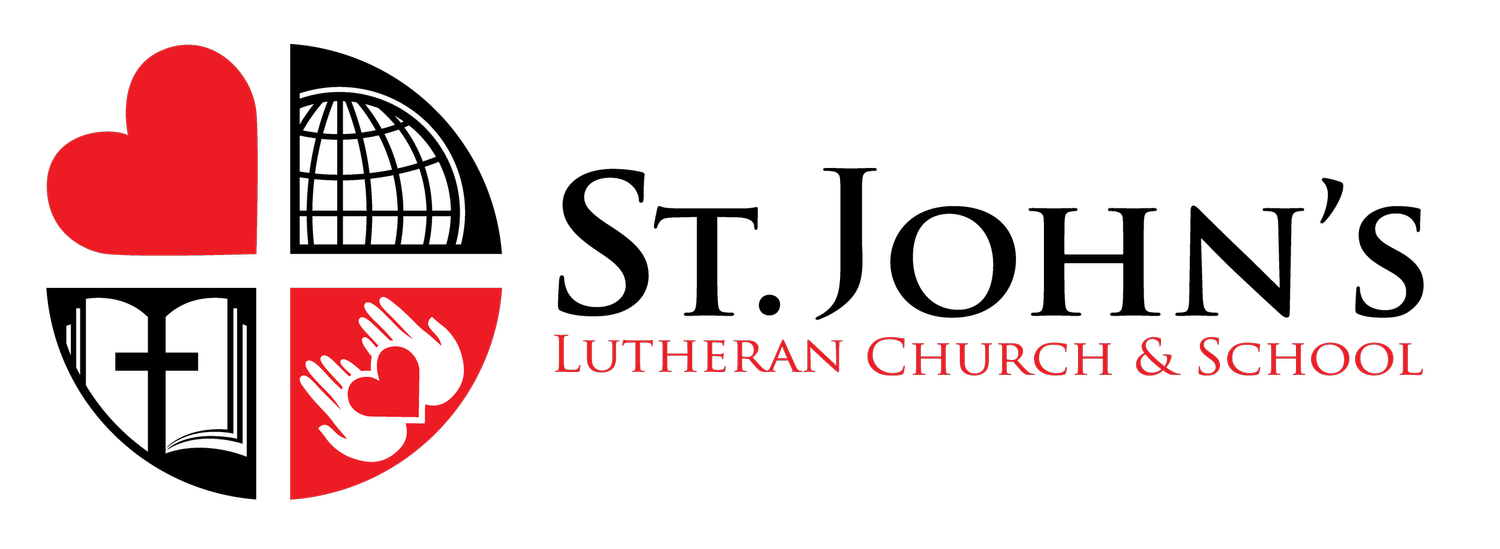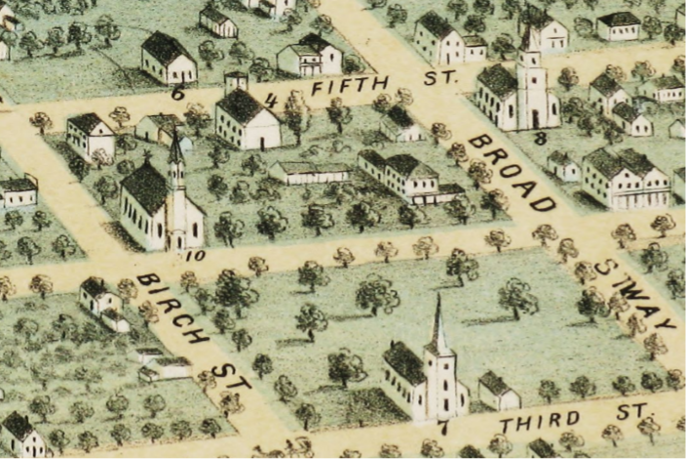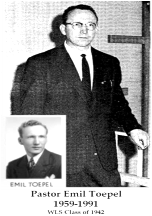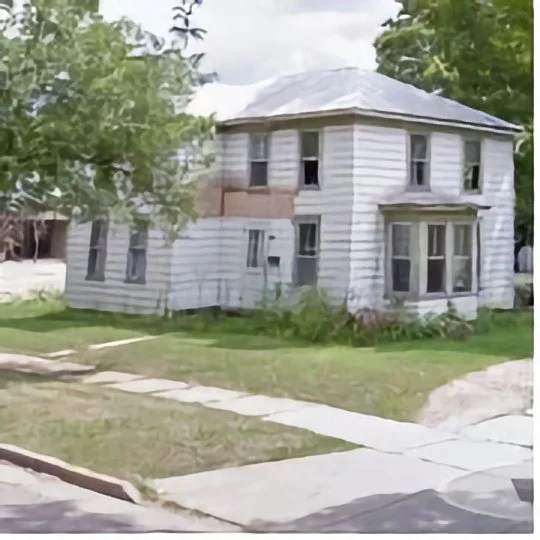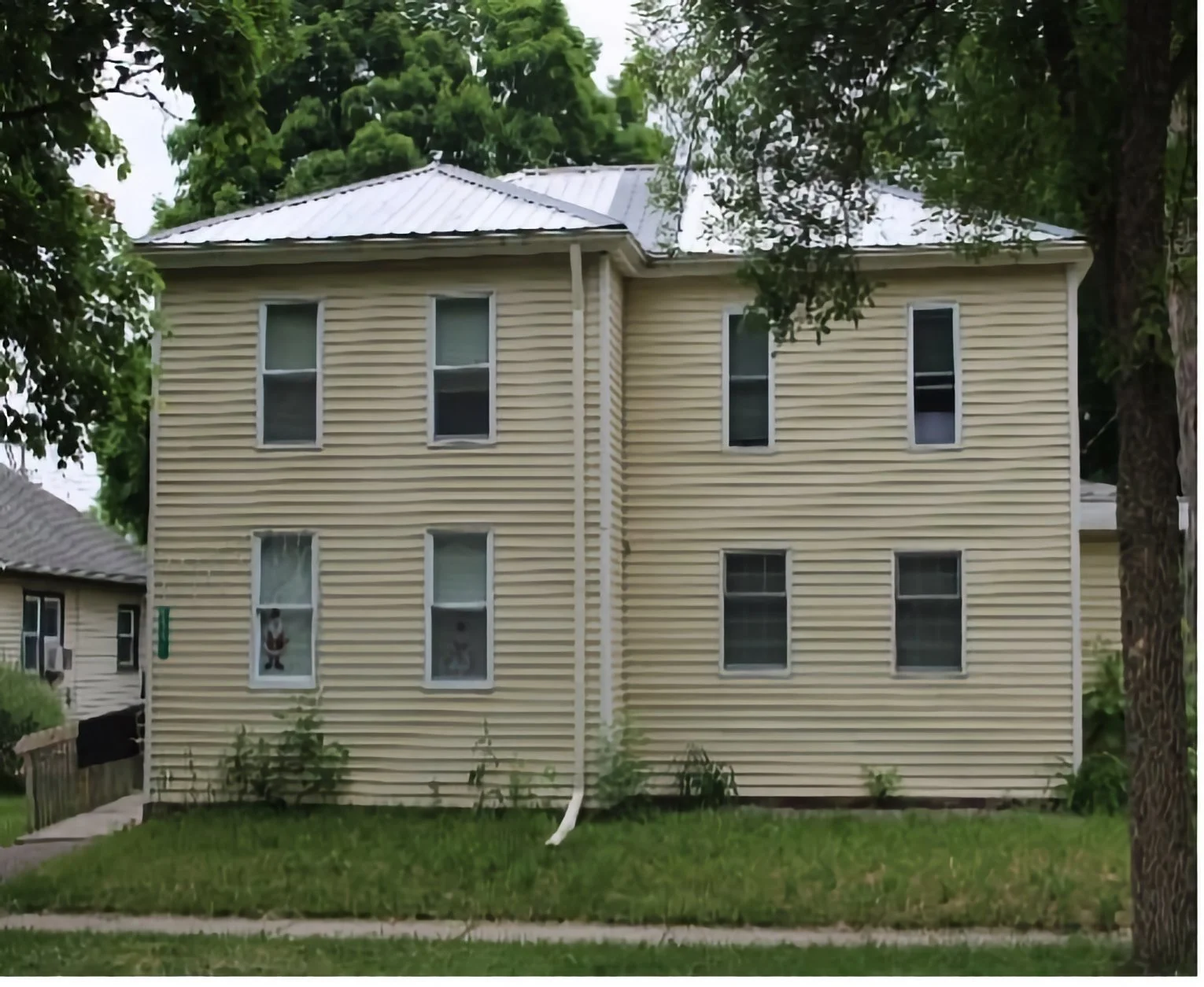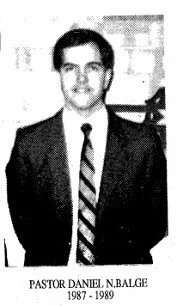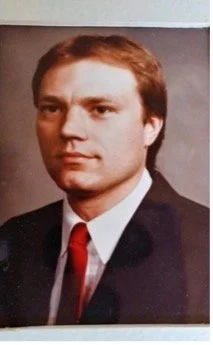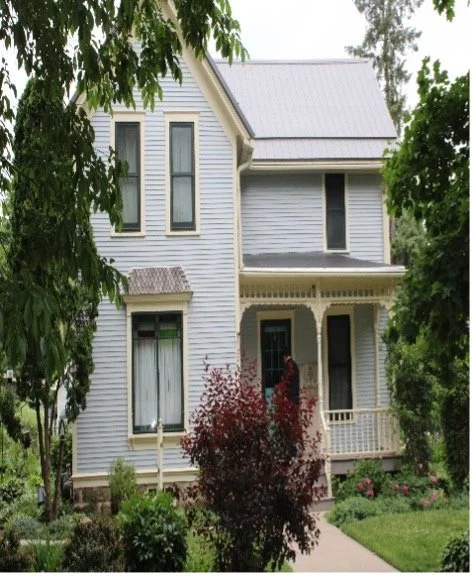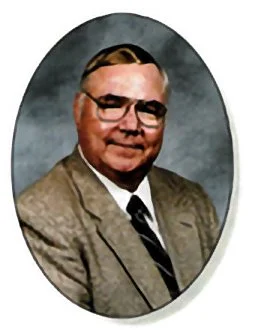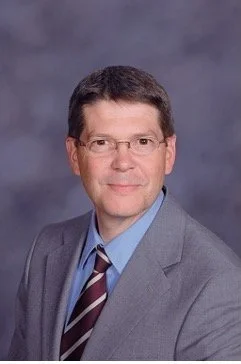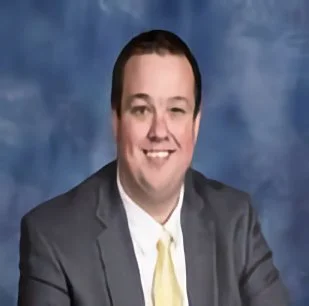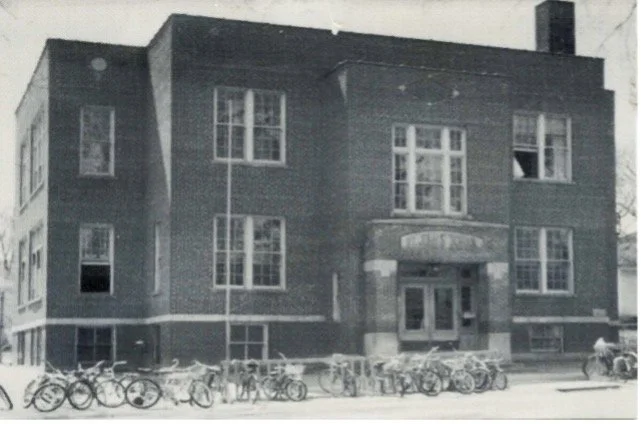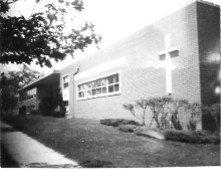Our History
〰️
Our History 〰️
The Beginning 1872-1903
St. John Evangelical Lutheran Church, Baraboo, Wisconsin
(Author Rev. Em. Allen Schroeder: Early Lutheranism in Sauk County)
Lutheranism entered Sauk County in 1854 when Pastor Ludwig Habel began preaching in the Town of Westfield every four to six weeks. He initiated work in Portage at the same time. Pastor Habel was pastor at Emmanuel Lutheran Church in Cottage Grove. He was a freelance mission developer aligned with the Buffalo Synod. All Buffalo Synod work in Wisconsin was turned over to the Iowa Synod in 1855.
Pastor Habel also did some preliminary work in German Valley (the valley between Leland and Denzer) in the Town of Honey Creek and on Happy Hill in the Town of Freedom. His successors at the Town of Westfield, Pastor Karl Beckel and Pastor August Rohrlack, continued the work. St. John’s Lutheran Church of the Town of Westfield was organized in 1857. St. John’s Lutheran Church in the Town of Honey Creek organized in 1859. The Honey Creek church built their first church in Leland in 1869.
The preaching station on Happy Hill in the Town of Freedom started by Pastor Habel in 1855. Services were held in the log cabin of Rudolph and Anna Zimmerly. (Zimmerly was originally spelled Zimmerli.) The Zimmerlys moved from Switzerland to Powhaten Point, Ohio in 1841. Four children were born in Ohio – including Jacob and Marianna. (Two died of cholera enroute to Wisconsin.) John was born in Wisconsin. The Zimmerlys relocated to the Town of Freedom in 1851. They built a cabin close to where Happy Hill Road meets Freedom Road. When Rudolph heard that there was a Lutheran pastor working in Sauk County, he arranged for Lutheran services at his cabin. The only Lutheran pastor working in Sauk County in 1855 was Pastor Ludwig Habel. Services continued in the Zimmerly cabin until either 1862 or 1863. Rudolph Zimmerly died in 1863. The Lutheran services were then moved to the Happy Hill School built in 1862. The congregation was served by pastors from the Town of Westfield.
With the arrival of Rev. Theodore Seyler in Honey Creek in 1868, preaching stations were opened in the Town of Greenfield, the Town or Merrimac, and the Town of Caledonia. The first services in these communities were in 1868 and 1869. Another preaching station opened in the City of Baraboo in 1870. Prior to 1870, William Canfield mentions the few Lutherans of Baraboo occasionally attended church in the Town of Greenfield. The reason for occasional attendance is because services were held only occasionally in Greenfield, once every three or four weeks. The Greenfield congregation worshiped at the Sunset View school on today’s Tower Road. While serving in Greenfield, Rev. Seyler realized that some of the worshipers lived in Baraboo.
When Rev. Seyler arrived in Honey Creek in 1868, he also took over the preaching station on Happy Hill. There he met a couple who was living in Baraboo but attended church on Happy Hill. That couple was Ludwig “Louis” and Marianna “Mary” nee Zimmerly Platt. Mary was the daughter of Rudolph and Anna Zimmerly. Both Louis and Mary grew up on Happy Hill. They were married in 1864. After they were married, they moved to Baraboo where Ludwig worked as a harness maker. They built a house on Seventh Avenue. Rev. Seyler gathered the Baraboo Lutherans who were worshiping on Happy Hill with the Baraboo Lutherans were worshiping in the Town of Greenfield to form a preaching station in the city. Ludwig and Mary Platt opened their home as a venue for the exploratory services. Mary was the ever- gracious hostess. The first service was held in 1870. Neither the services in the Town of Freedom nor in the Town of Greenfield discontinued in 1870 when services started in Baraboo. Both of those areas continued to worship in the schools mentioned.
Platt Home
Present-day
Not pictured:
Pastor Rehwald, 1873 –
Pastor Baumbach, – 1876
Pastor E. Giesel, 1876 – 1880
Pastor P. Scheffelmann, 1881 – 1882
Pastor J. Doerschner, 1882 – 1884
Pastor F. Nicolaus, 1884 – 1887
After Pastor Seyler moved in 1872, Rev. Herman Rehwoldt took over the multi-parish site. By 1873, the Baraboo group had grown to the point that it could organize as a congregation. That year, nineteen members met at the home of Louis and Mary Platt and adopted a temporary constitution. {The names of the original founders who signed this first constitution are the listed in the first record of the congregation as follows: Th. Koch, W. Schultz, A. Blankenburg, G. Cordes, H. Huebner, A. Ziegler, C. Ziegler, Louis Platt, Adoph Schellenberg, William Wagner, Louis Mogler, Jack Kimmerly, W. Marquardt, Magdalena Brenner, L. G. Arnold, Borkenhagen, Hollmuth, W. Ziegler, Hoernke. The congregation was also reorganized, and on February 4, 1877, a new detailed constitution was adopted and signed by the following twenty-three members: Wilh. Huebner, Carl Bender, August Marquardt, A. Ringling, P. Kriofsky, Robert Redel, Gottlieb Wagner, Julius Gust, August Gust, Edward Hiller, Martin Radke, Gustav Zantow, August Henke, Johann Marquardt, Gustav Hansch, Christian Kramer, August Ziegler and Wilhelm Dorn.
Services were moved to the Baraboo Collegiate Institute, the longtime predecessor of Baraboo’s first public high school. The Institute was a private, tuition-based school at Fifth Street and Birch St., next to the future Al Ringling Mansion.
First major public assembly location (#4) on picture, 5th Ave next to future Ringling Mansion.
In 1875, Rev. Rehwoldt’s wife died. He returned to Germany. He later returned to serve as a pastor in Wisconsin. Rev. Carl Baumbach replaced Rev. Rehwoldt in 1875. Rev. Carl Baumbach was the first pastor to whom St. John’s Lutheran Church of Baraboo issued a divine call. That is because he was the first pastor to serve after the church was organized in 1873.
A year after Pastor Baumbach’s arrival, it was recognized that the parish was too large with too much work for one pastor. There were eight churches in the parish: Leland, Sumpter, Freedom, Baraboo, Greenfield, Merrimac, Caledonia, and Sauk City. The parish was divided. The Leland church, under Rev. Baumbach, continued to serve Sumpter Lutheran Church and the preaching station in the Happy Hill School in the Town of Freedom.
A year after Pastor Baumbach’s arrival, it was recognized that the parish was too large with too much work for one pastor. There were eight churches in the parish: Leland, Sumpter, Freedom, Baraboo, Greenfield, Merrimac, Caledonia, and Sauk City. The parish was divided. The Leland church, under Rev. Baumbach, continued to serve Sumpter Lutheran Church and the preaching station in the Happy Hill School in the Town of Freedom.
A new pastor was called to the Baraboo congregation in 1876. He was also called to serve the congregations in the Town of Greenfield, the Town of Merrimac, and the Town of Caledonia. Kilbourn City, today’s Wisconsin Dells, was also added to the Baraboo parish. Rev. Ernest Giesel of Glencoe, Wisconsin was called. He married Anna Herbert in Glencoe earlier in 1876. Anna died in Baraboo in 1877. He married Elizabeth Herbert in Glencoe in 1878. Rev. Giesel was a gifted man who built up each of these congregations. After leaving Baraboo, he served four years in Illinois. Starting in 1884, he served Lutheran Church of Peace in Platteville for about twenty years. He also served as the president of the Augsburg Synod for twelve years. During his time in Baraboo, the church flourished. The congregation built its first church on Fourth Street while Rev. Giesel was pastor.
Pastor John Parlow
Old Church Location
Parsonage
Rev. Giesel accepted a call and was replaced in 1880 by Rev. Henry Scheffelman. He, too, covered the five parishes first assigned to Rev. Giesel. His pastorate was relatively short. He left the Baraboo congregation for Iowa in 1882 after serving only two years.
St. John’s Lutheran Church in Baraboo continued to grow. The vacancy caused by the departure of Pastor Scheffelman provided an opportunity to again discuss the workload of the multi congregation parish. Before a call was issued, it was determined that the multi church parish was too large and that the Baraboo church should have a pastor of its own. Therefore, the churches in the Town of Greenfield, the Town of Merrimac, and the Town of Caledonia called Pastor Christoph Kessler to be their pastor in 1882. Pastor Kessler was pastor of Zion Lutheran Stone Church in the Town of Westfield when that church was built. Kessler was already living in the Town of Greenfield although he was the pastor of St. John Lutheran Church in Rock Springs. Pastor Kessler kept the Rock Springs church along with the churches in the towns of Greenfield, Merrimac, and Caledonia.
St. John’s Lutheran Church in Baraboo called Pastor Johann Duerschner as their next pastor in 1882. He was a young pastor from a family of Iowa Synod pastors. He was born in Galena, Illinois. Several years after leaving Baraboo, he moved to New York where he was a pastor in Troy for twenty-six years.
As had Pastor Scheffelman before him, Pastor Duerschner stayed at Baraboo only two years. The short pastorates of the last two Iowa Synod men may indicate some rumblings in the congregation. More “old Lutherans” were moving to Baraboo. Pamphlets on the doctrine of eternal election were being distributed to lay people. Issues involving church and ministry were common. St. John’s Lutheran Church in Baraboo applied for a seminary graduate from the Wisconsin Synod’s seminary, then in Milwaukee, to be its new pastor. August Nicolaus was assigned and ordained into the ministry in 1884 as pastor of the Baraboo church. The church became a member of the Wisconsin Synod that year.
Within two years, Pastor Nicolaus opened a preaching station in North Freedom. Undoubtedly, exploratory work was done in the interim. This became St. Paul Evangelical Lutheran Church. Pastor Popp came after Pastor Nicolaus took a call to Fountain City in 1887.
Pastor Popp was called to serve both St. John’s Lutheran Church in Baraboo and St. Paul’s Lutheran Church in North Freedom. He came from the Wisconsin Synod Seminary in December 1887. With the death of Rev. Christoph Kessler in 1889, Pastor Popp also took on St. John’s Lutheran Church in Rock Springs. In 1892, Pastor Popp also became the pastor of St. Paul’s Lutheran Church in the Town of Westfield. In 1903, it was recognized that was too large of a parish. The field of work was divided. Pastor Popp remained at the Rock Springs and Westfield churches. The North Freedom church received a seminary graduate, Pastor Otto Kuhlow. St. John’s Lutheran Church in Baraboo called Pastor Henry Mueller in 1903. Pastor Mueller’s arrival marked the thirtieth anniversary of the congregation.
The Development & Growth of St. John’s (1903-1998)
Pastor H. Mueller succeeded Pastor Popp (Pope) in the year 1903, and served the congregation until he died, suddenly, on the afternoon of Sunday, April 23, 1922, after he had conducted service and a congregational meeting in the morning. During his pastorate the present church was erected on the corner of Fifth and East Street.
The cornerstone was laid on July 12, 1914, and the building was dedicated into the service of the Triune God on February 28, 1915. The building committee consisted of Fred Kessler, Charman, Wm. C. Miller, Superintendent of Construction, Carl Isenberg, Secretary, Emil Schudlick and Wm. Zuch. The architect was Mr. Andrew Roth of La Crosse, Wisconsin. A pipe organ was installed in the church in 1922.
After a vacancy of more than a half year Pastor Mueller was succeeded by Pastor G. Pieper. During his pastorate the congregation established its Christian Day School. Lots were purchased in the rear of the church on fifth Street, and on August 8, 1926, the new school building, which had been erected at a cost of more than $30,000 was consecrated unto God in two special services.
Mr. E. W. Ebert was called as the first teacher and principal of the school. It was assumed that he would be able to take care of the entire enrollment for a year or so, but already on the opening day another teacher had to be called, and a year later a third teacher was added because of the increased enrollment. For the next twenty years the enrollment remained at about 90 to 100 pupils taught by one male and two women teachers. Mr. Ebert remained as principal until the time of his death in February of the year 1946.
During Mr. Ebert’s lengthy illness, and after his death, Mr. Henry Lange, a candidate of theology, served as acting principal. In the summer of 1946 Mr. Lester Raabe accepted the Call of the congregation and was the school’s principal until 1950, when he accepted a Call to St. Paul, Minnesota. During Mr. Raabe’s principalship, enrollment reached a high of 124 and a Kindergarten was added.
While the school building was being erected, the congregation also purchased the present parsonage located next to the church on East Street. During Pastor Pieper’s time the congregation celebrated its fiftieth anniversary in June of the year 1923. The congregation then consisted of about 600 communicant members and about 850 souls. In the late summer of the year 1928 Pastor Pieper accepted the Call of St. Peter’s congregation at Fond du Lac, Wisconsin. He was succeeded in the late fall of 1928 by Pastor Herbert C. Kirchner.
In the year 1929 the congregation purchased the house next to its school building for a teacher’s residence, thereby rounding out its property on the corner of Fifth and East Streets into one compact unit. In 1936 the church auditorium was redecorated, and in 1941 the basement of the church was completely remodeled and equipped for the use of the societies of the congregation, largely through the help for these societies. In the summer of 1946, some alterations in the interior of the school building were made, the playground was graded and provided with proper fencing and backstops and the playground equipment was renovated.
During this decade the congregation also, liquidated the debt on the parsonage, the Principal’s residence, and the school building. Finally, as a mark of appreciation and thankfulness toward God, who, for seventy-five years, had blessed the congregation, the parsonage of the congregation was thoroughly renovated during the last half year, and an office was added on the first floor of the building.
The old red brick church served well for almost sixty years but, in 1970, the congregation abandoned plans for remodeling and chose to build a new church. The present home for the St. John’s Congregation was dedicated April 27, 1975.
Pastor Myron Schwanke
Pastor Thomas Fricke
St. John’s growing congregation required a second pastor. In 1987 St. John’s called Pastor Daniel Balge. He was succeeded by Pastor John Parlow, a former St. John’s vicar in 1990. Pastor Toepel retired in 1991 and was succeeded by Pastor Myron Schwanke. Pastor Thomas Fricke succeeded Pastor Parlow in 1995. In this its 125th year, St. John’s Evangelical Lutheran Church is served by Pastor Myron Schwanke and Pastor Thomas Fricke.
St. John’s Evangelical Lutheran Church
Highlights 1998-2023
Our heavenly Father continues to bless St. John’s Evangelical Lutheran Church and School. Just as we personally experience life’s challenges and successes as we grow in faith, so does the church. The recent COVID pandemic (2019-2021) was especially challenging, but God has been with us through the good and bad times, strengthening and guiding. The church and school remain strong as we go into the future. Some highlights of the past 25 years follow.
St. John’s Church
During these years of national pastoral shortage, we have been blessed with various pastors service: Myron Schwanke, Thomas Fricke, Carl Schroeder, Nicholas Maglietto, Timothy Kuske, and Jordan Ertl. During these years, we also had two vicars, Daniel Scharp and Luke Myslik; a staff minister, Scott Monroe; and a deacon, Andrew Tramp.Worship services have been enhanced by changes to our music program. The organ was dismantled and cleaned for the first time since its installation. A grand piano was added to the sanctuary. The Synod produced new hymnals and psalters which we have adopted.
The traditional Media Ministry has expanded with new technology. We have offered radio and TV broadcasts of our worship services for decades. When we created a church website we initially included sermons, but that has expanded to complete worship services. In addition to local radio and TV, services are now streamed on the radio and shown on FaceBook Live. Media Ministry is a non-budgeted service and is solely supported by donations. It is appreciated by our shut-ins as well as a broader community – especially during the COVID pandemic when people were not encouraged to attend in person. There is no limit to the potential audience of God’s Word.
The church library is 60 years old this year, having begun in 1963. In addition to providing books, audio and video materials, they help members by sponsoring Used Book & Toy “sales” during Lent and awarding graduating kindergartners with books.Ladies Aid continued to provide a variety of services such as shut-in baskets at Thanksgiving and preparing and serving at funeral lunches. Additionally, they sponsor Ladies Aid Scholarship to students choosing to attend Lutheran high school – to date, they have awarded 94 scholarships totaling $33,300.
The church building has undergone a variety of projects such as tuck pointing the bell tower, repairing the roof, replacing windows and internal drain, repaving parking lot and removing the berm. Sanctuary lighting has been updated with LED bulbs. Worship has been additionally enhanced by upgrading the sound system and adding video projectors and screens.
Thrivent Action Committee, TAC, has provided funds for a variety of church and school projects. Members who hold certain Thrivent insurance or annuity products direct some of Thrivent’s charitable giving towards their choice of church or school. Our local committee meets regularly to discuss projects they can fund from these donations. Projects have included purchasing some school supplies for students including Bibles, food for special events, registrations for conferences, DVDs of My Son, My Savior, subscriptions, entry rugs, and much more.
Moving forward in sharing God’s Word with our community, St John’s has participated in the annual Baraboo Holiday Light Parade, offered Trunk or Treat events at Halloween, and sponsored a booth at the Sauk County Fair with information about St. John’s and area WELS churches. Interested youth and men have played in the Church League Softball and members have cheered them on from the stands.
Pastor Carl Schroder
2009 - 2016
Pastor Nicholas Maglietto
2014 - 2018
First School
Opened September 7, 1926
St. John’s School
St. John’s School has taught our children about God’s love and grace, strengthening their foundation in the true word. Some St. John’s School graduates have gone on to attend Lutheran high schools and Lutheran colleges, choosing to begin a life in the teaching or ministry education. School staff have been led by principals: Alan Bitter, Scott Monroe, John Hartwig, Craig Breitkreutz, Bruce Fehlauer, Bill Otto, and Micah Biesterfeld.
Technology has brought changes to the school. Erasable white boards have replaced chalk boards. Computers, internet, projectors and Smart Boards let teachers expand their teaching styles. Videotape machines have been replaced with digital. A digital marquee sign provides information.
Childcare was added in 2003, providing a safe and loving situation for our children. Initially, the basement locker room was remodeled for this use. Later, a secondary building, “the Annex,” was added.
A variety of maintenance items have been addressed in this building which receives continual use by hundreds of children. Playground equipment was updated. Windows and doors were upgraded. A security system was added.
The school has benefited from The Dorothy Eschenbach Endowment Fund for unbudgeted school needs. Additionally, Morning Doves has sponsored fund-raising projects to help with other needs.
New School
Dedicated June 4, 1959
